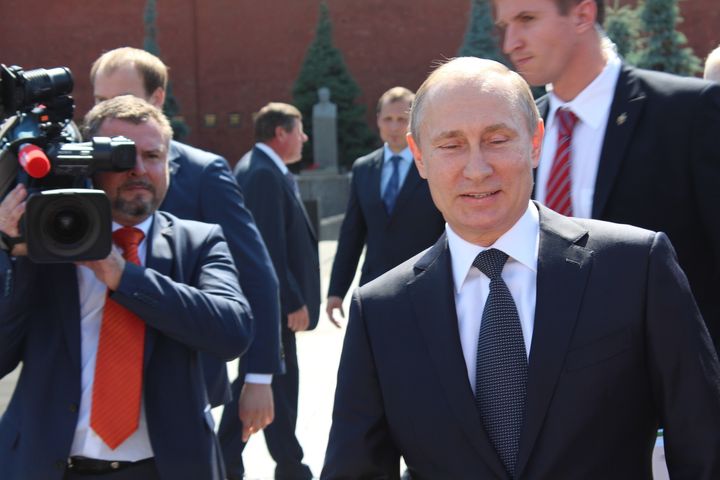This is the first entry into a series diving into the historical contexts behind Russian Federation President Vladimir Putin’s interest into Syria and the Middle East. While also reporting on the current conflict in Syria.

Vladimir Putin
Numerous outlets offer analysis on the current Syrian Civil War - especially focusing on Russian involvement in the conflict. However, the reporting of some as it being a surprise Russia would involve itself with the Assad regime. This reporting lacks understanding of the important historical context between Russia and Syria.
Elvin Aghayev and Filiz Katman of the Independent International Political Research Center describe the importance of the history between the two nations:
A discussion of the relations between modern Russia and Syria without investigating how the relations between the two countries have been sharpened in the historical process within the framework of limitless quest for national interests and the networks that they, as geographically remote countries have developed would be incomplete. For that reason it would be useful to examine the relations that Syria had established with USSR which may be called the ancestor of modem Russia since it has gained its independence in the 20th century and came to the fore in the political arena of the World as a national state.
Carlo Jose Vicente Caro adds important historical context on the issue stating:
... The Baath party was founded as a pan-Arab political entity which sought the unity of the Arab world through nationalism, secularism, and socialism. This party had the objective to emancipate the Arab peoples, while deemphasizing religious differences. It would be initially important in the development of Nasser’s Egypt, Iraq, and of course in Syria. In the 60s and early 70s the Soviet Union contributed fundamentally to the creation of a national industry in Syria, which took over importations. The USSR supplied engineers, scientists and machinery for the development of the country’s industries. Soviet cooperation in the development of the oil industry was key for the Syrian economy, as well as their contribution with the construction of railways and agriculture. Mixed corporations were built. It is calculated that around 10 percent of Syria’s population worked in these companies.
But Syria needed to guarantee its sovereignty and this is where Moscow’s military cooperation would start to play a role. The USSR sent military instructors, armament, and other equipment. It is calculated that around 16,000 Soviet military personnel served in Syria. The USSR continued to help Syria at every diplomatic and military levels. During the Six Day War in 1967 the USSR gave unfaltering aid to the Arab nations. Combat started on the 5th of June 1967 with the invasion of Israel to the United Arab Republic, and after to Jordan and Syria. The same day the USSR reacted with a declaration that denounced the aggression from Israel. This declaration had two requests for the government of Israel: to immediately cease the armed actions and to withdraw its troops to the other side of the line of fire. The war did not end until the 10th of June when the Soviet Union broke its diplomatic relations with Israel, declaring that if they did not suspend their military actions then they would take measures, including military ones, to force them to do so. The Soviet Union also controlled Syrian airspace and then it was given a port in the city of Tartus, which would permit the Soviet Navy to have a presence in the Mediterranean. Even today it is easy to find Soviet armament from the 1960s in Syria.
On October 8, 1980, Syria and the USSR signed the Treaty of Friendship and Cooperation, which contained an article that stipulated military consultation and cooperation in case of threat and peace of one of the parties. The article in question (Article Six) reads "In the event of situations arising which threaten the peace or security of either side or pose a threat to peace or violate peace and security throughout the world, the High Contracting Parties shall immediately enter into contact with each other with a view to co-ordinating their positions and co-operating in order to remove the threat which has arisen and to restore peace."

The full text of the Soviet-Syrian Treaty of Friendship and Co-Operation
The Russian - Syrian partnership was well intact before Russian military forces were on the ground in Syria. According to an annual report compiled by Richard F. Grimmett - of the Congressional Research service in Washington, Russian arm deals with Syrian more than doubled from - $2.1 bill to $4.7 billion - spanning between 2007 to 2010.
During that time frame, Russian officials aggressively pushed back against any suggestion of an arms embargo against Syria, due to their relationship with the Assad government. Such an embargo would have allowed the enemies of Assad to stockpile weapons against their ally.
The connection between the Russian and Syrian governments is a thread which runs back to the 1960s, in order for a non-disastrous resolution to come from the already global humanitarian crisis, those in positions of power will have to understand the relationship between these two allies.
To keep up with Walter’s journalism you can follow him @GentlemansHall on Twitter
